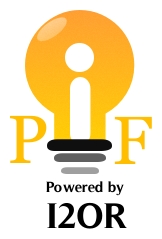Effects of Inhalation of Relaxing Essential Oils on Electroencephalogram Activity |
| ( Volume 2 Issue 5,May 2016 ) OPEN ACCESS |
| Author(s): |
Inseong Lee |
| Abstract: |
|
The purpose of this study was to evaluate the effects of lavender (Lavandula officinalis) and bergamot (Citrus bergamia, Risso) essential oil inhalation on electroencephalogram (EEG) recordings. EEGs were recorded in 50 healthy participants. Twenty-five participants were assigned to the experimental group and twenty-five to the control group. Participants in the experimental group inhaled a mixture of 1 drop of lavender oil and 1 drop of bergamot oil were mixed in 20mL of distilled water for 5 min, using a nebulizer. Participants in the control group inhaled 2 drops of lavender oil were mixed in 20mL of distilled water for 5 min, using a nebulizer. EEGs were recorded using a quantitative 8-channel system, and data were analyzed using SPSS Win 18.0, including descriptive statistics and independent t-tests. The absolute theta power EEG spectrum at the right prefrontal lobe region significantly increased after essential oil inhalation in the experimental group compared to the control group. There were also significant differences in the relative fast and slow alpha power spectra after essential oil inhalation in the experimental group compared to the control group. Therefore, both physical and mental states became more stable and relaxed after inhalation of essential oil in the experimental group compared to the control group. A mixture of lavender and bergamot oil was more effective than lavender oil alone for sedation and relaxation, as well as for reducing anxiety and stress. In conclusion, these findings provide a scientific rationale for potential therapeutic interventions aiming to relieve anxiety and stress. |
| Paper Statistics: |
| Cite this Article: |
| Click here to get all Styles of Citation using DOI of the article. |
 Click Here for
Click Here for Track Your Paper

 Call for Paper
Call for Paper
